Home > Oasis of Peace > Projects & Outreach > Art Gallery > בִּלְבּוּל بَلْبَلَة Confusion
בִּלְבּוּל بَلْبَلَة Confusion
Wednesday 1 September 2021, by
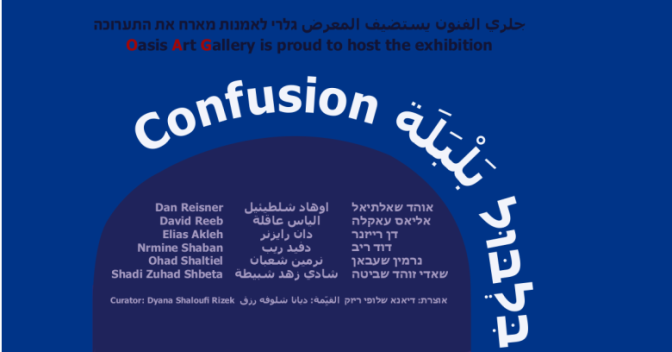
The pandemic and its ramifications affect all of us in various ways, and at various levels, whether psychological, personal, social or international. While the disease has brought terrible suffering, some of its effects have been positive. It has given the planet a time to rest a little and heal itself. Many have learned to love nature, and enjoyed its exhilarating and refreshing gifts. In daily life, some have learned anew how to enjoy staying at home, without needing to rush out to shops, workplaces or public events.
Our personal experience of the pandemic, whether painful or fortunate, is affected by prevailing socio-economic disparities, politics, international currents, and above all the experience of being alive during an age of uncertainty and confusion.
Confusion is central to our human experience. It inhabits the gap between what is experienced and what is imagined; between truth and fake facts.
In our “Confusion” exhibition, Palestinian and Jewish artists express these themes using various techniques. Their wonderful artworks will be on display at the gallery until the end of October. During this time, we will be happy to coordinate a visit with you, so you can participate in the fascinating experience of seeing the world through the eyes of artists who have reflected on this significant theme.
This is a challenging, non-binding exhibition that gives free rein to the creative freedom of six artists. They express themselves through different materials, techniques and directions that do not necessarily match or blend. Seeing the points of contact between them, as well as the stark contrasts, makes for an experience of unity in diversity, an enjoyment of the uniqueness that unites us as human beings.
The confusion is evoked by the exhibition poster that itself: despite the diversity of languages and alphabets, it is arranged in such a way that the observer may ask: Where is the confusion?
The Artists

Dan Reisner – Jaffa
Dan Reisner, a well-known sculptor of the urban space, creates for the most part sculptures and bronze figurines that enrich the outer and inner environment. Reisner’s sculptures add value, beauty and personality to their surroundings. He recognizes the importance of the Arabic language and this adds the dimension of a strong conscious statement to his repertoire.
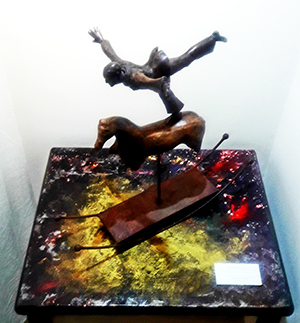
Reisner’s series of miniature bronze sculptures (which number about seventy) express real existential power. Despite the heavy themes he sometimes evokes, Reisner’s sculptures and other works create a sense of melody so that one can enjoy their beauty, detail and meaning.
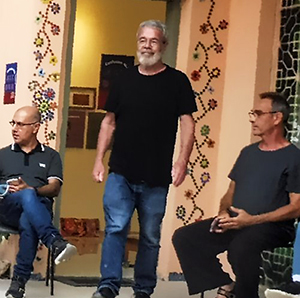
David Reeb (Tel Aviv)
David Reeb is a major political artist who certainly lives with a love for creation and artistic work combined with a deep commitment to political change. Reeb often combines textual art and photographic elements, transforming these into a figurative painting that expresses his political views.
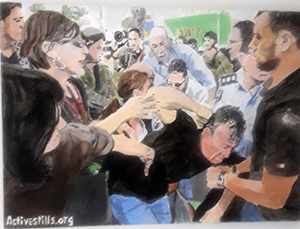
Rich in detail, his paintings also constitute a detailed documentary record. When he visits demonstrations in occupied Palestinian villages, he films these, and draws from the activity the strength to continue. Reeb expresses an individual viewpoint through the use of vibrant colours that yet give a sense of calm and serenity. He draws us to look differently at places that are known and familiar to us.
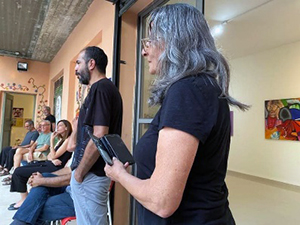
Elias Akleh (Nazareth)
Elias Akleh exploits his diverse abilities and skills to recreate realistic facial expressions and views of the human body, within an abstract realism. He turns his subjects into a kind of abstraction that merges with the universe around them. The human figure becomes an integral part of the whole, an existential spiritual conception. Is this the depiction of a relaxed interaction with the environment or rather a defense against the familiar, through resort to a more metaphysical trajectory?
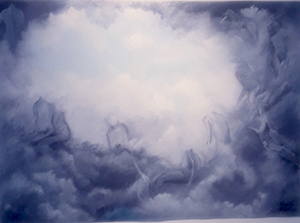
In any case, the play between symbolism and abstraction, the abstemious use of color and especially the application of cold colors, invites us to a calm, restful and deep examination.
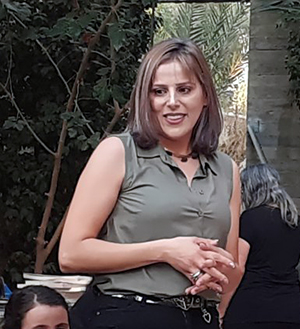
Nrmine Shaban (Nazareth)
Nrmine Shaban is known for her three-dimensional artwork and creation of Plasticine or colored clay figurines. Shaban emphasizes feminism in most of her works to highlight longstanding injustice regarding the role and status of women.
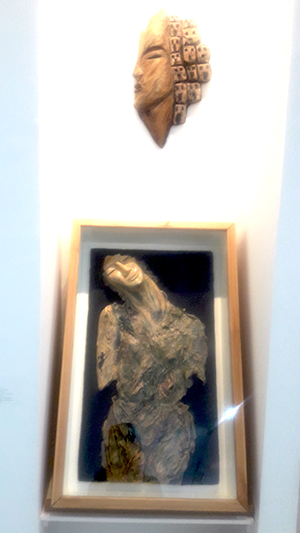
She uses the interaction between expressionism and an abstract and even figurative style to move from a state of apprehension and worry to a state of belief in achieving fairness and freedom. Her works awaken our curiosity, draw us in, and invite us to explore their mystery.

Ohad Shaltiel (Tel Aviv )
Ohad Shaltiel , with ingenious mobility and the use of many materials and techniques, presents the viewer with a fascinating visual experience. Shaltiel places paint or tar on a surface, predicts its random results and begins to bring to life what is happening by application of different materials, precise drawings, and even by scratching around these materials, so that they appear to emerge directly from the page or surface.
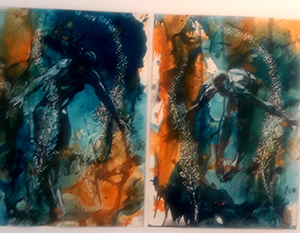
Intentional themes and diverse ways of expression constitute a kind of dynamic that moves between contradictory techniques and a game that embodies, out of nothingness, resurrection and renewal.
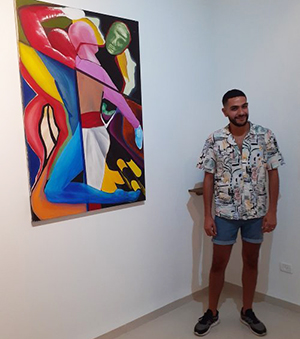
Shadi Zuhad Shbeta (Tira)
Shadi Zuhad Shbeta expresses through his works a philosophical orientation of Sufism. He harnesses the circular and expansive physical and mental movements of the dervishes as a response to insular social thinking. Shbeta also weaves surrealism, expressionism and symbolism into his paintings to tell a story that includes contemporary insights. Shbeta’s works have a narrative presence with emphases from the cultural life of the society he experiences. He uses bold and varied movements and colours without hesitation and harnesses them in favor of content and inspirations that show no restraint.





